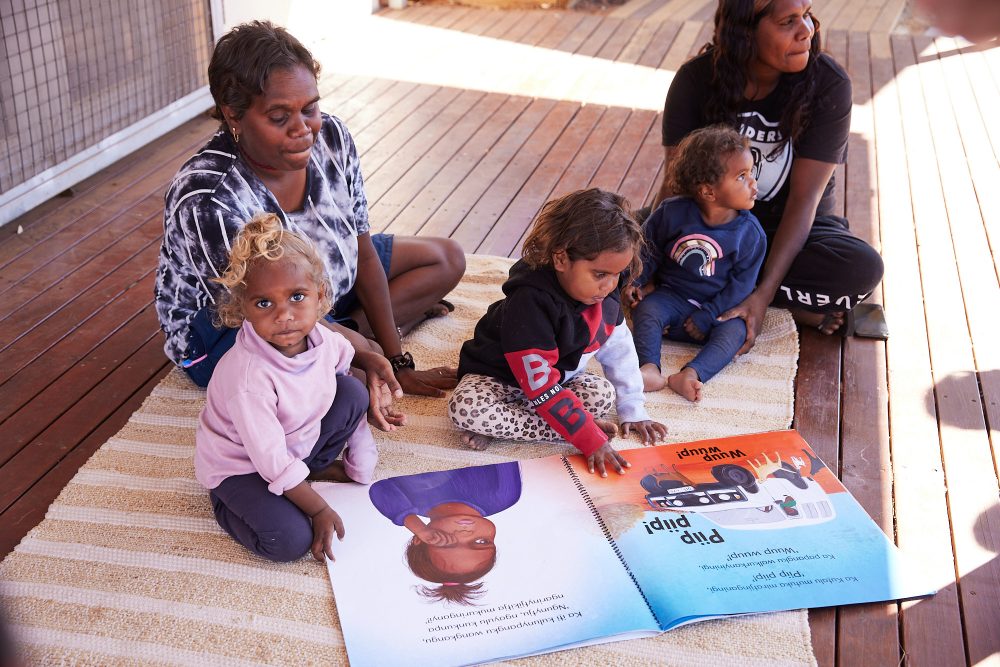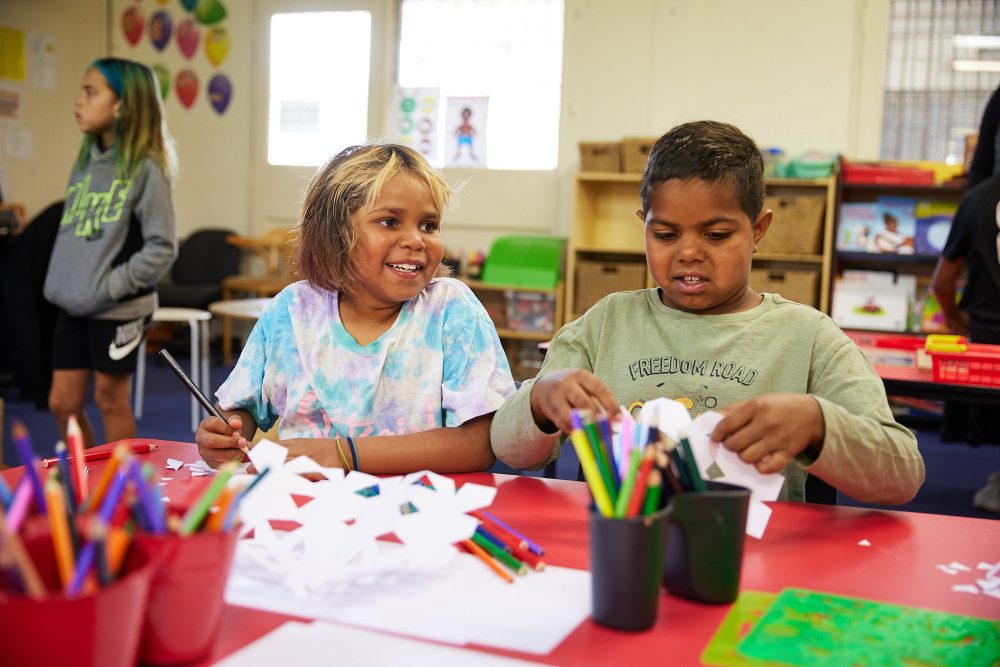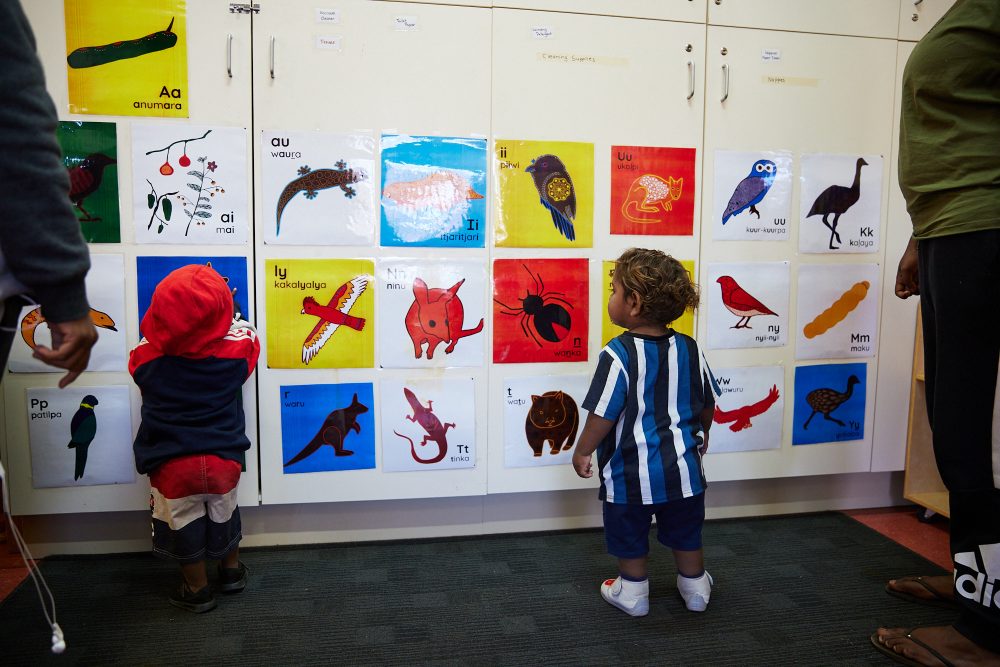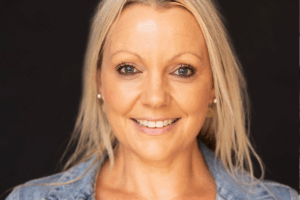IMAGES: Andre Castellucci
Building Aṉangu students’ multilingual literacy skills for learning across the curriculum, by drawing on the strong foundation of Aṉangu languages, cultures and knowledges.
A collaborative approach to bilingual learning in the Aṉangu Pitjantjatjara Yankunytjatjara (APY) Lands in South Australia’s north-west has been warmly embraced by schools and the local Aṉangu community.
The Strengthening Pitjantjatjara and Yankunytjatjara languages in Aṉangu schools project is centred around 10 Aṉangu schools in total, and focus on learning in and through the student’s first language, Pitjantjatjara and Yankunytjatjara. It forms part of the Department for Education’s Aboriginal Education Strategy.

For many South Australian students, the fact that the Australian Curriculum is written and delivered in English would go unnoticed, as English is their first language.
However, for children in Aṉangu communities, the need to take the curriculum and contextualise it in their language has been identified as an important step that’s needed to support student learning.
This change in perspective allows the local Aboriginal language and culture to be used as a foundation for learning.
Lois Fraser, Aṉangu Coordinator at Kenmore Park Aṉangu School confirmed that students at the school often struggle to understand English.
“Teaching both languages is much better. It’s easier for them to learn more quickly. Now, they love coming to school every day. They get happy and excited,” Ms Fraser said.
Two way learning
Across the APY Lands, schools and communities are working together to create opportunities for two-way or bilingual learning.
Kenmore Park Aṉangu School principal Charlie Klein says there is rich learning on Country, and when that’s brought back into the classroom it engages his students in learning in a way that has meaning for them.
“We have a strong focus on the inclusiveness of culture and language, it’s their (Aṉangu) number one value,” Mr Klein said.
“They want two-way learning. So, we still do Standard Australian English, we’re still doing maths, we’re still covering all our subject areas, but we do include learning on Country. We do two-way science using Aṉangu knowledge, where they lead the learning.
The core to it is empowering Aṉangu in the learning. We go on Country every week – Aṉangu will lead that and then we bring that learning back into our school.
“So, whilst we have explicit Pitjantjatjara lessons, it’s also inside classrooms, being used to explain to the kids concepts in other subject areas.
“When you’re involved in bilingual or two-way learning, kids see that they can learn.”
Aṉangu Educator at Kenmore Park Aṉangu School Marianne Fraser agrees that the students love going out bush to learn on Country and they feel proud upon returning to the classroom.
“They do their good work, they get happy and excited, proud. They love coming to school every day,” Ms Fraser said.
The bilingual learning approach is also showing improvements in the learning outcomes for local students.
“Last term I signed off on two kids who had A’s in science, benchmarked nationally. I’ve never done that in 40 years in remote schools,” Principal Klein said.
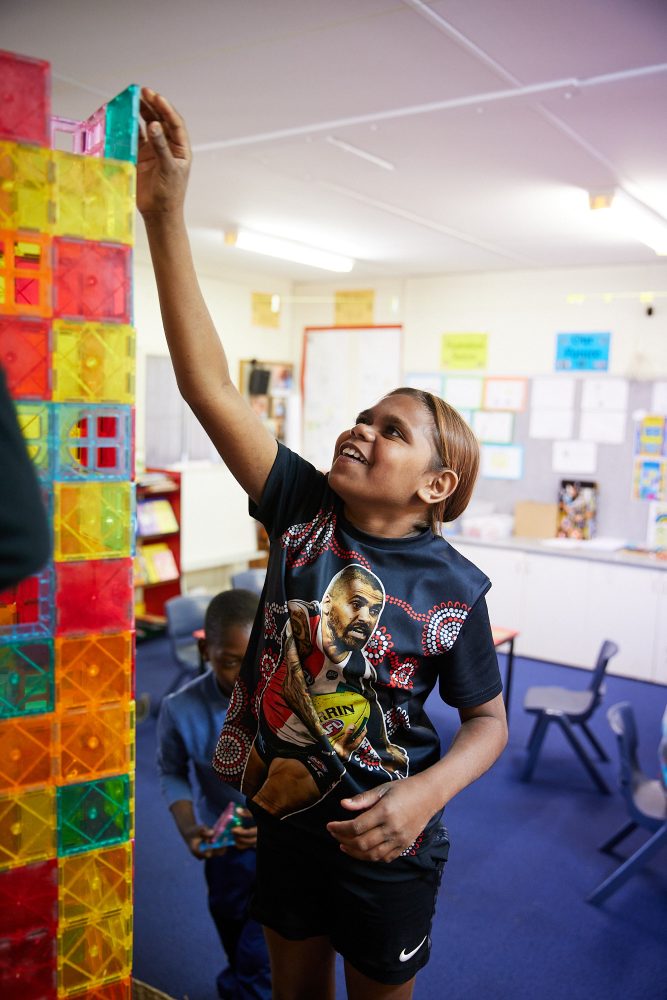
Celebration of language
In Aṉangu schools, first languages are celebrated right from birth, with young children being able to access bilingual resources and programs at the school’s family centre and preschool.
As they move into school, additional strategies include placing an Aṉangu Educator in each classroom to deliver a culturally responsive pedagogy, as well as holding structured Pitjantjatjara lessons.
Chiara Cocchiarella, a teacher at Ernabella Aṉangu School who co-designs lessons with her Aṉangu colleagues, said seeing kids learning in both worlds and engaging in their lessons is very special.
“I think the most important thing to do when you’re working with Aṉangu Educators is to remember that you are a team and that you need to take that time to sit down and plan all learning areas together and actually let the Aṉangu Educators tell you what they want their students and their families to be learning,” Ms Cocchiarella said.
Aṉangu languages hold the Tjukurpa, the core of Aṉangu identity and culture.
Learning Pitjantjatjara and Yankunytjatjara gives Aṉangu students the chance to bring their own languages, cultures and understandings to their learning as strong foundations.
It builds literacy skills which can be transferred to Standard Australian English and learning across the curriculum.
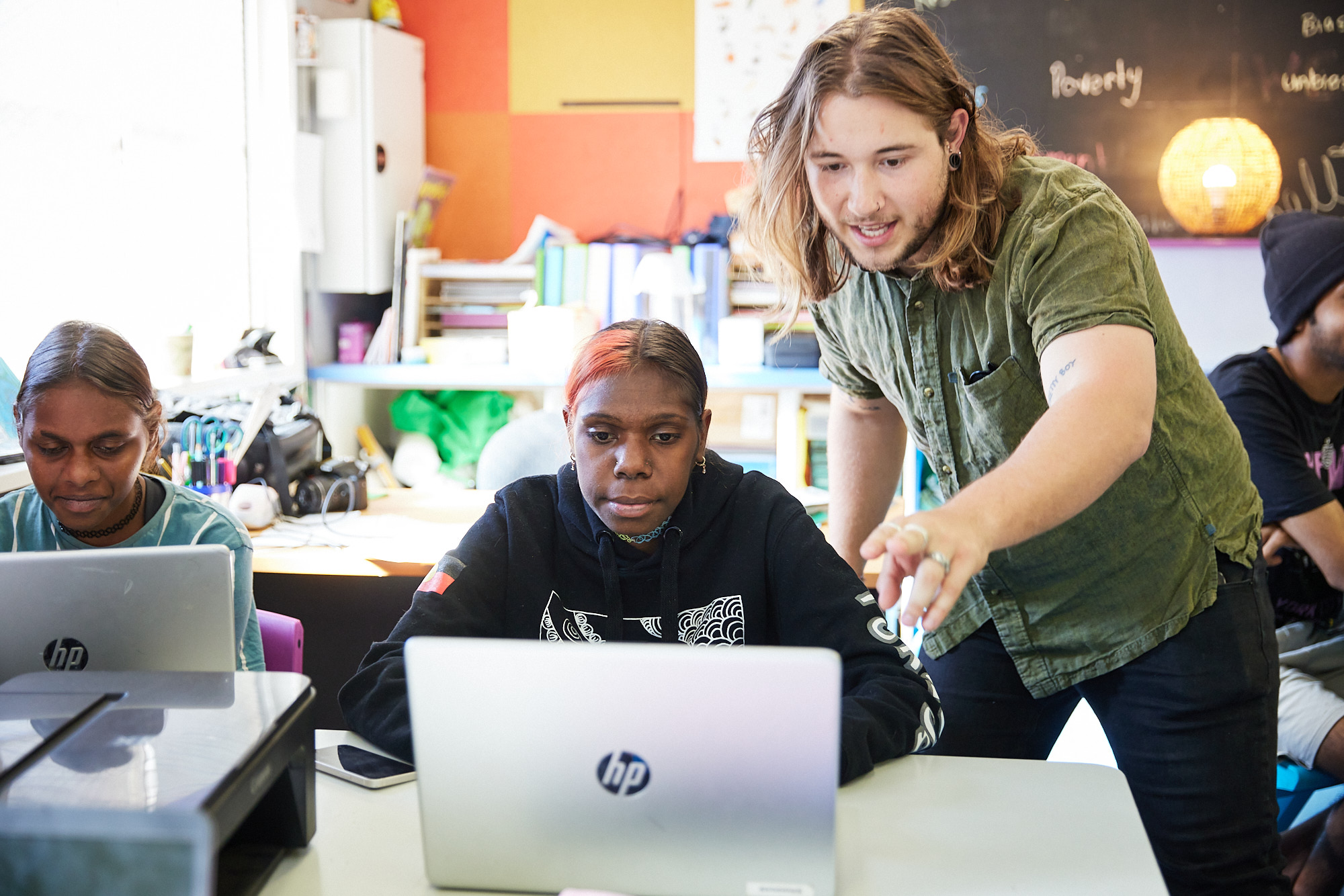
According to Dan Bleby, the department’s Aṉangu Bilingual Education Project Officer, at the time of colonisation of Australia there were about 250 Aboriginal languages and hundreds more dialects.
However, across the past 200 years that’s dropped to 12 strong languages, including the languages being taught in this project – Pitjantjatjara and Yankunytjatjara.
“We have a responsibility as a state and as a system to do what we can to maintain and strengthen [these languages], but also to see that language strong into the future for these kids and communities,” he said.
Aṉangu have always invested in education in their schools.
Since the first Aṉangu school was founded in Ernabella in 1940, school education has always been seen as a vehicle for their language and culture to be strengthened.
This is a big responsibility for us. We need to be able to listen to communities and understand what they want for their kids. They want their voices, languages, culture to be really powerfully presented in education – Mr Bleby
Graduate teachers from Adelaide often arrive in one of the 10 Aṉangu schools in South Australia’s remote north-west and far west coast ready to deliver the Australian Curriculum.
This project is beginning to show the importance of Aṉangu Educators, who live within the community bringing their Aṉangu knowledge, context and language expertise to student learning.
But more importantly, the Aṉangu Educators are central to those schools as they bring an understanding of the children and the ways that they learn.
“These Aṉangu Educators are incredibly important in helping those kids reach their full potential in education,” Mr Bleby said.
At its core, the project has focused on teaching students in a way that resonates with them.
“What that means is you’re responsive to every single child that sits in front of you,” Mr Bleby said.
“You understand that they’re not an empty vessel, that they have incredible skills, languages, cultures that they bring into your classroom.
“Recognising that you make connections with what they bring and the learning that you’re going for. In a context like Aṉangu schools that becomes even more important. Because you’re teaching on their Country, you’re teaching kids that deserve the same kind of future that any kid in the state does.
“The responsibility for educators is to be responsive to the context, to the really amazing things that those kids bring and to the importance of supporting them to keep those things strong into the future, and for perpetuity is huge. It’s not something that any of us should take lightly.”
Resources
When it comes to literature and resources, the community across the APY Lands has consistently asked for their languages to be given the same value as English.
Another element of the bilingual learning initiative includes the development of Pitjantjatjara and Yankunytjatjara books and resources, including books that have been translated from Standard Australian English.
The production of several picture books is something tangible the community has grasped onto and another example of how the project is supporting learning and literacy.
Deep engagement and learning outcomes
When children are learning in Pitjantjatjara or Yankunytjatjara with a familiar Aṉangu Educator at the front, there is deep engagement and demonstrated learning outcomes across the board.
“Their language is respected. Their culture, their families are respected,” Principal Klein said.
“This actually gives kids a sense of wellbeing. What the kids are getting is satisfaction that they can actually do both ways. The more confident, the more happy they are, the more they learn – it’s as simple as that.”
For more information head to the Aboriginal Education Strategy initiatives and progress page:
Follow KIDDO on Instagram and Facebook, and subscribe to our weekly newsletter
